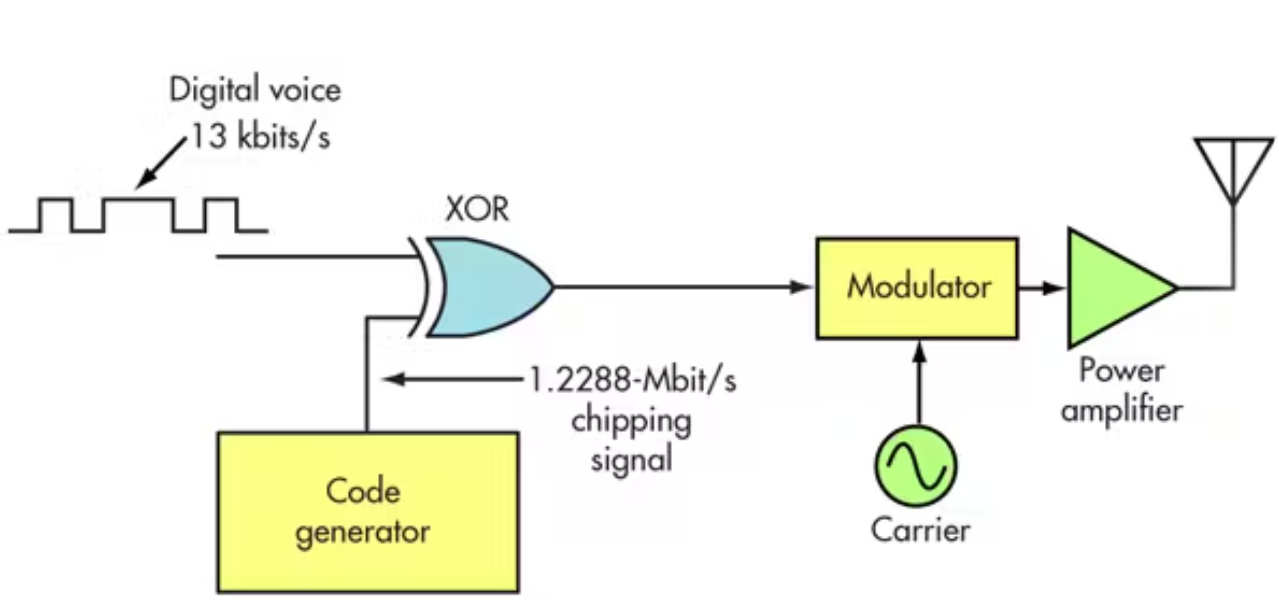CDMA is another pure digital technique. It is also known as the spread spectrum because it takes the digitized version of an analog signal and spreads it out over a wider bandwidth at a lower power level. This method is called direct sequence spread spectrum (DSSS).
The digitized and compressed voice signal in serial data form is spread by processing it in an XOR circuit along with a chipping signal at a much higher frequency. In the CDMA IS-95 standard, a 1.2288-Mbit/s chipping signal spreads the digitized compressed voice at 13 kbits/s.

The chipping signal is derived from a pseudorandom code generator that assigns a unique code to each user of the channel. This code spreads the voice signal over a bandwidth of 1.25 MHz. The resulting signal is at a low power level and appears more like noise.
Many such signals can occupy the same channel simultaneously. For example, using 64 unique chipping codes allows up to 64 users to occupy the same 1.25-MHz channel at the same time. At the receiver, a correlating circuit finds and identifies a specific caller’s code and recovers it.
The 3G technology called wideband CDMA (WCDMA) uses a similar method with compressed voice and 3.84-Mbit/s chipping codes in a 5-MHz channel to allow multiple users to share the same band.
Reference: electronicdesign
